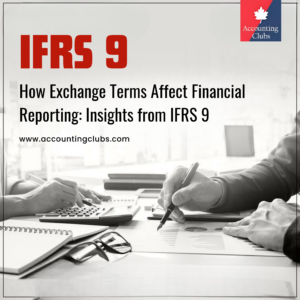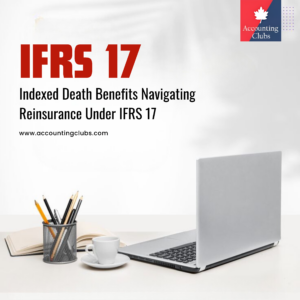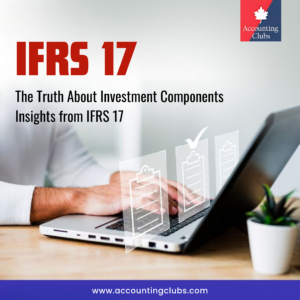Chapter 8 : FAQ
Local legislation and exemptions from preparing consolidated financial statements
The presentation of consolidated or separate financial statements by an entity is determined by local legislation, which specify the timing and duration of such presentations. Local legislation may permit or mandate an intermediate parent company to generate individual financial statements that adhere to International Financial Reporting Standards (IFRS), rather than consolidated financial statements. If local laws or regulations permit a business to not create consolidated financial statements, the entity should nonetheless assess the exemptions outlined in paragraph 4 of IFRS 10. It should then establish whether it is exempt from creating consolidated financial statements according to IFRS.
Forms of interest in another entity
A reporting entity may have equity in another entity or be involved in that entity in other ways. Potential stakes in an entity can consist of, but are not restricted to: Debt or equity instruments. Credit augmentation and assurances. specific derivatives. Liquidity support. responsibilities associated with supporting an employee benefit trust. a privilege for participation. a lingering concern. a rental agreement. the allocation of financial resources. Additional agreements under contract. any non-contractual method via which one entity exercises major influence, joint control, or control over another entity.
Identification of relevant activities
Entity A offers loan notes denominated in pounds sterling to investors, while it acquires financial assets denominated in Euros and US dollars. It mitigates the disparities in cash flow by utilizing currency and interest rate swaps. Entity A’s pertinent activities encompass the following: Engaging in the buying and selling of assets. Overseeing financial assets throughout their lifespan, including in the event of default.
Establishing a financial framework and securing funds for its operations. Managing the currency and interest rate risks that arise from company business by using hedging strategies. These operations are expected to have the greatest impact on the returns of entity A.
Assessing power where different investors control relevant activities in different periods
An investor possesses control over an investee when the investor holds established entitlements that grant it the present capability to oversee the pertinent operations of the investee. Can an investor now have authority if their decision-making powers pertain to an activity that will only take place in the future? Entities X and Y have established a new corporation with the purpose of building and managing a toll road. Entity X is accountable for the implementation of the toll road project, with an estimated duration of two years. Subsequently, entity Y possesses jurisdiction over all aspects pertaining to the operation of the toll road.
Question
Can entity Y exert control over the company during the construction phase, despite entity X being in charge of construction and having the power to make necessary choices during this time?
Solutions
Entity Y may possess authority during the construction period, notwithstanding its inability to now use its prerogative to make decisions. An investor who possesses the capacity to control the activities that have the greatest impact on the returns of the investee holds authority over the investee. The criteria outlined in example 1 of paragraph B13 of IFRS 10 should be utilized. These criteria encompass the evaluation of the investee’s purpose and design, as well as the aspects that influence its profit margin, revenue, and overall worth. For instance, the national roads’ authority may oversee the development of the road. Entity X has been commissioned to construct the road with oversight from the government. As per the government’s examination, Entity X will recoup its expenses together with a certain profit margin. The margin will be regained by adjusting the number of tolls that will be allocated to entity X, ensuring that entity X has priority access to the revenue flows generated by tolls. Entity Y will oversee the operations of the toll road, which includes maintenance. They have the right to receive a management fee equal to any remaining cash in the entity after all operating expenses, including payments to entity X, have been settled. Entity Y have the capacity to establish tolls.
Alternatively, the agreement could specify that the government controls the tolls that can be imposed, resulting in consistent revenue, while allowing the investee more freedom in designing the toll road. Entities X and Y would then evenly share the net cash flows of the investee. The investee’s returns would be influenced by the decision-making authority of each investor regarding the factors mentioned in (b), as well as the investors’ exposure to potential fluctuations in returns.
Level of involvement in relevant activities
Diverse levels of involvement can be found in relevant activities; for instance, daily involvement in overseeing the investee’s relevant operations is probably a good sign that the investor contributes significantly. Conversely, participation in pertinent activities may be governed by a contractual arrangement that establishes the investee’s investment policies rather than being as evident as day-to-day administration. Contractual agreements may therefore have a major effect on the investee’s returns.
Control via the power to direct the board’s votes
An entity will effectively control the board because it may decide what decisions are made by the board when it has the authority to choose a director who will have a casting vote in the event of a board stalemate and consequently holds more than half of the voting power on the board. Half of entity B’s voting shares are owned by entity A. There are eight members on the board of directors. Two additional investors each appoint two directors, whereas Entity A appoints four directors. At board meetings, one of entity A’s nominated directors always preside over entity B’s board and casts the deciding vote. On all pertinent actions, voting decisions are determined by a simple majority. In the event that a majority decision cannot be reached by the directors, Entity A has the casting vote. This gives entity A authority over board choices and, consequently, authority over pertinent activities of entity B. As a result, entity B is included in entity A’s consolidated financial statements as a subsidiary of entity A.
Options and risk of losing key management personnel
Entity J has a purchase option to purchase the remaining 55% of entity X after acquiring 45% of it. Entity X is a specialized organization that creates cutting-edge technologies for its sector and plays a significant role in product research. In order to obtain access to this important technological research, which would enhance its own operations and company, entity J purchased a stake in entity X. Key management staff, who are essential to the operation of a significant project that will introduce a product that entity J believes to be revolutionary in its sector, own the remaining 55% of the equity.
However, these managerial staff members are probably going to go if entity J exercises the option. Their expertise of technology is unique when it comes to that particular product. The current value of entity X’s share price is four times the option strike price. If entity J would not benefit financially from exercising the option—indeed, if doing so would result in a loss of benefit—it might not be meaningful. It appears likely that the option won’t be meaningful given the high strike price and probable departure of important management staff.
Can an option provide power where the option holder does not have the operational ability to exercise?
Investor X holds a 30% stake in the manufacturing company, whereas Investor Y holds a 70% stake. The investee is under the management of voting rights and is engaged in the manufacturing of a specific product. The patent for this product is owned by investor Y, who is also currently managing the investee. Investor X possesses an out-of-the-money call option for the shares owned by investor Y. If the call option is exercised, the patent utilized by Investee will be transferred back to investor Y, unless there is a change in control of investor Y, investor Y violates the conditions of the contract between the parties, or investor Y goes bankrupt. The investee is unable to produce the product without investor Y’s patent, which is irreplaceable. Both parties do not anticipate the call option to be exercised. The call option serves to grant investor X the ability to assume control of Investee under extraordinary circumstances.
Question
Does the option provide investor X with power over Investee?
Solution
Investor X’s option is unlikely to be considered significant. Investor X has significant obstacles in exercising the call option due to the possibility of the patent reverting back to investor Y, unless certain specified requirements have been met. Moreover, investor X will only get benefits from the exercise of the call option if one or more of the aforementioned events take place. The design of the call option implies that it is not intended to be executed. The reference is to paragraph B48 of IFRS 10. Hence, it is improbable that investor X will gain any authority from this choice.
Can an option provide power where the option holder does not have the financial ability to exercise?
Investor X holds a 30% ownership stake in the firm ‘Investee’, whereas Investor Y holds a 70% ownership stake. The control of the company is determined by voting rights. Investor X currently has the right to buy the shares held by investor Y at a price that is lower than the current market price. Nevertheless, investor X is experiencing financial hardship and lacks the financial capacity to exercise the option. The investee is generating a profit.
Question
Does the option provide investor X with power over Investee?
Solution
An option that is currently exercisable and in-the-money is likely to confer authority. Investor X may be unable to exercise the option alone and may need to secure financing from a third party. Alternatively, Investor X may choose to exercise the option and promptly sell its stake to investor Y. If investor X has the ability to sell the option or gain economic advantages from exercising it, then the option would grant control over Investee. An out-of-the-money option implies the presence of substantial obstacles that would hinder the holder from exercising it. An option is considered insubstantial if the option holder cannot get any profit from exercising it. It is important to also take into account the purpose and design of such an option.
Substantive rights currently exercisable
An investee determines decisions regarding pertinent activities during special meetings and annual general meetings (AGMs). The upcoming Annual General Meeting (AGM) is scheduled to take place in a time frame of eight months from now. Shareholders who possess, either individually or collectively, a minimum of 5% of the voting rights have the authority to convene a special meeting within a period of 30 days. Modifications to policies regarding pertinent activities can only be made during designated or prearranged gatherings.
The investor possesses a significant portion of the voting power. The voting rights are substantial as they allow the investor to make decisions on relevant actions promptly, and the 30-day delay before using these rights does not negate their existence from the moment
Substantive rights not currently exercisable: forward contract to be settled in 25 days
An investee exercises its decision-making authority for pertinent activities during special meetings and annual general meetings (AGMs). The upcoming Annual General Meeting (AGM) is scheduled to take place in a period of eight months. Shareholders who own a minimum of 5% of the voting rights, either individually or collectively, have the authority to convene a special meeting within a period of 30 days. Modifications to policies regarding pertinent activities can only be made during designated or prearranged gatherings.
The investor possesses a forward contract to obtain the majority of the voting rights in the investee. The forward contract will be settled in 25 days. The forward contract is considered significant due to the inability of existing shareholders to modify current policies within a 30-day timeframe. By that time, the forward contract will have been settled, and the investor’s rights will be basically identical to those of a majority shareholder. The forward contract empowers the investor, despite the fact that settlement has not yet taken place.
Substantive rights not currently exercisable: forward contract to be settled in six months
An investee makes choices on relevant activities during special meetings and annual general meetings (AGMs). The next AGM is in eight months. Shareholders that individually or jointly possess at least 5% of the voting rights can convene a special meeting within 30 days. Policies over related activities can be altered only at special or scheduled meetings.
An investor owns a forward contract to acquire the majority of the voting rights in the investee. The settlement date of the forward contract is in six months. The forward contract is not now meaningful, because the existing shareholders can change existing policies over the relevant activities before the forward contract is settled.
Therefore, the investor does not have the current power to direct relevant operations. The forward contract will become substantive 29 days before the forward contract becomes exercisable.
What types of instrument absorb variability from an investee, and which instruments create variability in an investee?
A party that borrows money from an investee at a plain vanilla interest rate contributes variability from its own credit risk to the investee; accordingly, it is not exposed to variable returns. Conversely, an ordinary shareholder in an investee absorbs fluctuations in the investee’s residual returns, and so the shareholding absorbs variability.
Whether an instrument creates or absorbs variability might not always be clear. We would generally expect the instruments in list I below to absorb variability of an investee, and those in list II to create variability. List I. Instruments that, in general, absorb variability of an investee and, if the holder’s degree of exposure to variable returns is great enough and the other tests in IFRS 10 are met, could cause the holder of such instruments to consolidate the investee: equity instruments issued by the investee; debt instruments issued by the investee (irrespective of whether they have a fixed or variable interest rate); beneficial interests in the investee; guarantees of the liabilities of the investee given by the holder (protecting the investors from suffering losses); liquidity commitments provided to the investee; and guarantees of the value of the investee’s assets. List II. Instruments that generally contribute variability to an investee and so do not, in themselves, give the holder variable returns and cause the holder of such instruments to consolidate the investee: amounts owed to an investee; forward contracts entered into by the investee to buy or sell assets that are not owned by it; a call option held by the investee to purchase assets at a specified price; and a put option written by the investee (transferring risk of loss to the investee).
What types of instrument absorb variability from an investee, and which instruments create variability in an investee?
When a party borrows money from an investee at a simple and standard interest rate, it adds uncertainty to the investee’s credit risk. As a result, the party itself is not subject to unpredictable returns. On the other hand, a regular shareholder in a company they have invested in experiences changes in the company’s remaining profits, and therefore the ownership of shares is affected by variability.
The determination of whether an instrument generates or absorbs variability may not always be readily apparent. The instruments listed in List I are typically designed to mitigate the unpredictability of an investee, while the devices in List II are intended to introduce variability. List I. Instruments that typically mitigate the fluctuations in the performance of a company in which an investor has a stake. If the investor’s level of exposure to unpredictable returns is significant and all other requirements in IFRS 10 are satisfied, these instruments may lead to the investor consolidating the company. The investee issues equity instruments, debt instruments (regardless of their interest rate type), beneficial interests, guarantees of investee liabilities (to protect investors from losses), liquidity commitments to the investee, and guarantees of the investee’s asset value. List II. Instruments that typically introduce variability to an investee and hence do not inherently provide the holder with varied returns, resulting in the consolidation of the investee by the holder of such instruments: Outstanding debts owing to an investee; agreements made by the investee to purchase or sell assets that it does not own; a call option held by the investee to buy assets at a predetermined price; and a put option issued by the investee to transfer the risk of loss.
Common indicators of a structured entity
Common indicators of a structured entity include the following characteristics: Utilisation of experienced directors, trustees, or partners with expertise in their respective fields. The absence of a clear intention to make a profit, resulting in the organised company being designed to distribute all profits in the form of interest or fees. Reside in tax havens classified as ‘offshore’. A life that is clearly defined or specified. Existence with the aim of attaining a particular financial goal. For instance, an institutional investor may seek out a bank to acquire investments with a specific level of risk. In response, the bank may establish a structured organisation to facilitate this transaction.
Assessing control of an issuer of credit linked notes with limited activities and derivatives that enhance risk
Background and purpose
A credit-linked note structure might be set up for various reasons, the most common being:
- to enable a bank to obtain credit protection on loans that it holds; and
- to enable a bank to create marketable securities of a particular risk profile that are attractive to investors. The bank will earn fees from creating and marketing the structure.
Facts
A Bank sets up a structured entity (SE), and enters into a credit default swap (CDS) with the SE, for which it pays the SE a premium at market rates. Under the CDS, if a stipulated commercial debt security (‘the Risky Asset’) defaults, the SE will pay to the Bank the par value of that security. Any liability of the SE to the Bank in respect of the CDS has priority over all of the SE’s other liabilities.
Shares of the SE, which are held by independent third parties (for example, a charitable trust), have no significant decision-making rights, due to the restrictions imposed by the contractual agreements.
The SE invests in AAA bonds whose maturity matches that of the CDS and the notes issued by the SE (see next bullet point). In the event that the AAA bonds are downgraded below AAA, the Trustee of the charitable trust is required to sell the bonds and buy replacement bonds with an AAA rating.
The SE issues a single tranche of credit-linked notes (‘the Notes’) to a large number of dispersed, unrelated investors (the ‘note-holders’), which do not form a reporting entity. No individual note-holder owns more than 5% of the notes. The returns on the Notes are linked to the returns from the AAA bonds and the payments on the CDS. The noteholders are represented by a Trustee, which can be removed by a majority vote of the note-holders without cause. The Trustee receives a fixed level of remuneration that is consistent with market rates for its level of services. The Trustee has been assessed to act as an agent for the note-holders under IFRS 10. This example does not, therefore, consider the requirements for agent/principal in IFRS 10.
The note-holders have limited exposure to downside variability through their holdings of senior notes. . However, the extent of an investee’s exposure in itself does not necessarily result in power.
The SE’s liability in respect of the Notes is limited to the paramount adjusted for CDS receipts/payments. If the SE is not able to repay the notes in full, due to a credit event on the CDS, it does not constitute a legal default by the SE (that is, debt holders cannot take actions against the SE, such as seizing its assets or placing the SE under liquidation).
However, a default on the notes will arise if the SE is not able to repay the notes, due to default of the bonds. If this occurs, both the Bank (if the CDS is a net receivable from the SE) and the note-holders as a group, as represented by the Trustee, have normal powers under bankruptcy laws (for example, seizure of assets, or liquidation of the SE) to recover any amounts due from the SE.
There are no conclusive indications that any of the note-holders has power over the SE. Further, paragraph B16 of IFRS 10 indicates that only one investor can control an investee. As explained above, there are strong indications that the bank has power.
Analysis under IFRS 10
What are the SE’s relevant activities?
However, if the SE is unable to redeem the notes due to the default of the bonds, a default on the notes will occur. In the event of such a situation, both the Bank (assuming the Credit Default Swap is a net receivable from the Special Entity) and the note-holders, collectively represented by the Trustee, possess standard powers granted by bankruptcy laws (such as asset seizure or liquidation of the Special Entity) to reclaim any outstanding payments owed by the Special Entity.
The following relevant activities exist within the SE:
The asset-replacement decision will be made if the bonds are downgraded. In the case of a default by the SE, such as if the bonds fail and the note-holders and/or the Bank are owed money, the SE will have the right to seize and recover assets.
While these decisions are influenced by uncertain events, they are nevertheless considered important actions according to IFRS 10 para B53. If the contingency does occur, these decisions have the potential to severely impact the returns of the SE. [IFRS 10 App A]. Accordingly, the SE does have relevant activities.
Who controls the SE?
There are a number of factors that need to be assessed in order to identify which party controls the SE and thus consolidates it. The Trustee is assessed as acting as an agent in this situation, and has not been considered further in the analysis of control.
What types of consolidation adjustment might be required for non-coterminous year ends?
Consolidation adjustments may be necessary for dividends distributed by the subsidiary to the parent and for resolving outstanding intragroup balances at the subsidiary’s year-end. These adjustments are an integral component of the consolidation process.
Some transactions may not be as obvious, such as a post balance sheet event occurring in the subsidiary. For instance, if a subsidiary incurs a significant loss on a contract between its year-end and that of its parent company, an adjustment would need to be made.
Another instance when a subsidiary is established in a foreign country is when there is a decrease in the value of the currency it uses for trading between the end of its fiscal year and that of its parent company.








